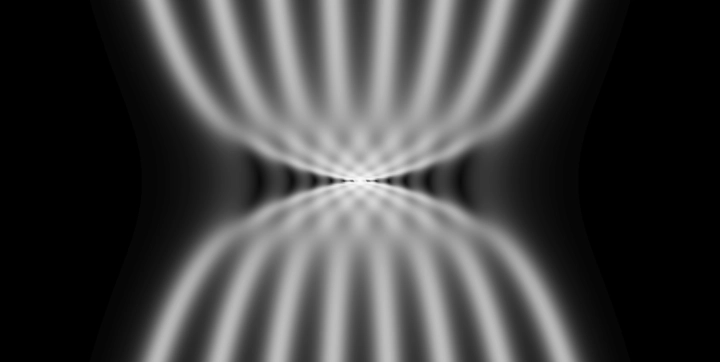Large-order asymptotics for multiple-pole solitons of the focusing nonlinear Schrödinger equation
 Multi-pole soliton of order 8.
Multi-pole soliton of order 8.
Abstract
We analyze the large-$n$ behavior of soliton solutions of the integrable focusing nonlinear Schrödinger equation with associated spectral data consisting of a single pair of conjugate poles of order $2n$. Starting from the zero background, we generate multiple-pole solitons by $n$-fold application of Darboux transformations. The resulting functions are encoded in a Riemann–Hilbert problem using the robust inverse-scattering transform method recently introduced by Bilman and Miller. For moderate values of n we solve the Riemann–Hilbert problem exactly. With appropriate scaling, the resulting plots of exact solutions reveal semiclassical-type behavior, including regions with high-frequency modulated waves and quiescent regions. We compute the boundary of the quiescent regions exactly and use the nonlinear steepest-descent method to prove the asymptotic limit of the solitons is zero in these regions. Finally, we study the behavior of the solitons in a scaled neighborhood of the central peak with amplitude proportional to $n$. We prove that in a local scaling the solitons converge to functions satisfying the second member of the Painlevé-III hierarchy in the sense of Sakka. This function is a generalization of a function recently identified by Suleimanov in the context of geometric optics and by Bilman, Ling, and Miller in the context of rogue-wave solutions to the focusing nonlinear Schrödinger equation.
Type
Publication
Journal of Nonlinear Science 29, 2185–2229, 2019